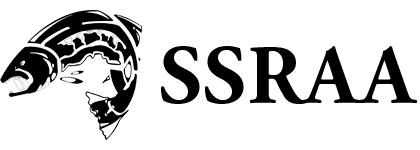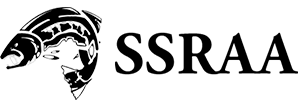Introduction
Southern Southeast Regional Aquaculture Association (SSRAA)
The Southern Southeast Regional Aquaculture Association, commonly known as SSRAA (pronounced “Sarah”), is a non-profit corporation whose mission is “to enhance and rehabilitate salmon production in southern Southeast Alaska to the optimum social and economic benefit of salmon users”. SSRAA was incorporated in 1976 and began operations in 1978. Today the value to the region of SSRAA’s annual production can exceed $50 million.
SE Alaska commercial fishermen were the initial funding source for this user-pays activity. Regional commercial salmon fishermen voted to annually tax themselves 3% of the ex-vessel value of their harvest to support the organization. The willingness of fishermen to tax themselves served as long-term collateral for the capital and operational loans necessary to build hatchery facilities and begin operations. Though fishermen continue to tax themselves, SSRAA’s primary funding comes from the “cost recovery” harvest of some of the fish produced by SSRAA.
SSRAA policy is governed by a 21-member Board of Directors representing the diverse group of salmon harvesters and community organizations in the region. The Board includes representatives of commercial, subsistence and sport fishers, fish processors, Native corporations, municipalities, the business community and the public. SSRAA employs 26 full time staff and up to 30 seasonal employees.
The current SSRAA program includes hatcheries at: Whitman Lake on the Ketchikan road system; Neets Bay, a remote site in Behm Canal; Burnett Inlet, a remote site in NW Clarence Straits; and, Crystal Lake on the Petersburg road system. Fish from these hatcheries are released at the hatchery sites as well as a number of remote rearing sites including: Nakat Inlet, Kendrick Bay, Anita Bay, Bakewell Lake, McDonald Lake and Neck Lake.
Salmon enhancement projects are designed to supplement wild salmon production, not to replace wild fish. The goal of the program is to enhance salmon fisheries, not specific stocks of wild fish. Hatchery and release sites, as well as the species of salmon cultured and released, are selected through an intensive planning and permitting process. The process is intended to maximize the value of returning salmon while minimizing the impact of hatchery production on naturally produced fish.
SSRAA’s activities includes all species of pacific salmon except pink salmon. SSRAA’s primary production in terms of fish numbers involves Chum salmon with an annual release of more than 150 million chum salmon fry. As many as 42 million pounds of adult chum salmon have returned from these releases while it is more common for the annual return to be 20 to 30 million pounds of chum salmon. These fish are primarily harvested by commercial seine and gill net gear, while trollers target the fish in several specific locations. Chum salmon also provide SSRAA’s primary cost recovery harvest in Neets Bay. Chum salmon can also provide a mid-season sport fishery between early-running chinook salmon and the late-season coho returns.
SSRAA releases about 5 million fall coho smolt annually. The fall coho release at Neets Bay is one of the largest enhanced coho returns in Alaska, perhaps anywhere.Commercial fishermen annually harvest between 150,000 and 300,000 SSRAA-produced coho. Commercial trollers captured more than half of these fish with a good number also going to the gill net fleet. Sport anglers benefited from these fish as more than half the annual recreational harvest in the Ketchikan area, approximately 15,000 coho, comes from SSRAA projects, primarily releases at Neets Bay. In the late-season recreational fishery anglers sometimes harvest at an average of a coho per rod hour of fishing.
We call SSRAA’s summer-run coho Snow Pass coho. A summer-run coho is a coho that behaves like a sockeye. The fish return early in the summer, enter freshwater (a lake) and slowly mature. They spawn in the fall at the same time as normal fall-run coho. These unique fish are found in several small natural runs in SE Alaska. The summer coho is a high quality fish for both the sport and commercial harvester since the fish return to freshwater “bright” and fat.
SSRAA began a large enhancement project using summer coho in Neck Lake in Whale Pass, Prince of Wales Island in 1996. The fish are reared in large net pens in the lake. They are held dormant through the winter in the net pens, fed again in the spring and then released into the lake. From 60,000 to 120,000 of these fish return annually. Snow Pass Coho are harvested primarily by commercial gill net and sport anglers. Some fish are also taken for cost recovery at Neck Lake.
Chinook is the king among pacific salmon. The troll-caught king is the finest quality wild salmon harvested with winter-caught fish being the premium. Unfortunatly they are also the scarcest of salmon. Troll caught kings are expensive. When the oldest trollers say they are going “salmon fishing’ they are talking about kings. These fishermen know the other species of salmon by their specific names.Because of diminished natural production of these fish in waters south of Alaska, and the associated constraints of the Pacific Salmon Treaty on the Alaska harvest of chinook, there is a relatively small fixed number of naturally produced chinook available to the SE Alaska fisherman.
Chinook salmon present a challenge for SSRAA and others who try to enhance traditional sport and troll fisheries. While it is sometimes possible to produce relatively large numbers of these fish; because of current treaty imposed time constraints on the troll fishery, it has been difficult to get the fish harvested by those for whom they were intended. Regardless, SSRAA annually releases more than to 2 million chinook smolts. A large number of these are produced in cooperation with the Division of Sport Fish of the Alaska Department of Fish and Game. SSRAA chinook releases are expected to produce from 30,000 to 60,000 adult fish annually.
Sockeye or red salmon have historically been the most commercially valuable Pacific salmon. Sockeye have historically also been the most difficult of the Pacific salmon for the fish culturist. Sockeye are easy to culture but for one thing, all populations of wild sea-run sockeye carry a particularly virulent virus. In the last three decades, beginning in Alaska, fish culturists in the Northwest have learned to work more successfully with these fish despite the presence of the virus.
SSRAA has recently been involved in the enhancement/restoration of several natural populations of sockeye: Hugh Smith Lake and McDonald Lake. In addition, approximately 300,000 sockeye were held in Burnett Inlet Hatchery and released at Burnett and Neck Lake. The work in Hugh Smith was successful, while the releases at Burnett and Neck Lake have produced few adults and was discontinued. The restoration project at McDonald is new; the first release was in the spring of 2009.
Are Alaska Salmon Hatcheries Programs Unique: There is a great deal of negative publicity related to the serious decline of salmon in the Pacific Northwest and the role in that decline assigned by some investigators to hatcheries. Since the inception of the modern salmon enhancement program in the early 1970’s we attempted to minimize any impact on wild fish by hatchery programs by our programs. By any measure of harvest, numbers or value, Alaska salmon enhancement has been successful. The primary difference is that programs in Alaska were designed to enhance fisheries as opposed to specific stocks of fish. Most large hatchery production, as well as the harvest of those fish, is widely separated from significant wild stocks of fish.
Alaska’s salmon enhancement program is not generally well-understood outside of Alaska. Today, in 2011, the harvest of salmon in Alaska is as great as it has ever been. Alaska salmon habitat is intact and unspoiled. Alaska fishery managers have been suggested by many as a model for salmon management. Alaska salmon stocks remain healthy. The fishery was the first significant commercial fishery deemed “sustainable” by the Marine Stewardship Council (MSC). The diverse commercial fishing industry is still the largest employer in Alaska. Alaska is probably the last place where an independent commercial salmon fisherman can still make a living fishing.
The Alaska enhancement program is still relatively young. The program is the result of extensive planning and a difficult permitting process. For instance, we must consider the genetic and disease consequences as well as management concerns created by returning adults for any project we might propose. We are sometimes asked if the fish SSRAA produces simply replace wild fish that would have been produced if SSRAA hatcheries had not been in place.SE Alaska has had record salmon returns and harvests of naturally produced fish throughout the time SSRAA has operated; an objective assessment would conclude that these enhancements have not come at the expense of naturally produced fish.


